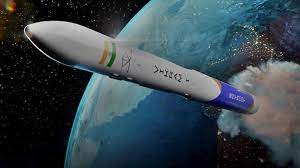Today Current Affairs: 10th November 2022 for UPSC IAS exams, State PSC exams, SSC CGL, State SSC, RRB, Railways, Banking Exam & IBPS, etc
Table of Contents
Bailey K. Ashford Medal For 2022:

Indian physician and scientist Dr Subhash Babu have received the prestigious Bailey K. Ashford Medal for 2022.
- In its 82-year history, the award has never been given to an Indian scientist or an Indian institution for work.
- The American Society of Tropical Medicine and Hygiene (ASTMH), the largest scientific organization in tropical medicine in the world, present the medal annually to one or more mid-career researchers for distinguished work in tropical medicine.
- He is the Scientific Director of the ICER (International Centre for Excellence in Research)-India Programme.
- He is a pioneer in research on helminth infections and tuberculosis.
New Species Of Estuarine Crab:

Researchers have discovered a new species of Estuarine Crab at the Mangroves of Parangipettai near the Vellar River estuary (an area where river meets the ocean) in Cuddalore district, Tamil Nadu.
- The species has been named ‘Pseudohelice Annamalai’ in recognition of Annamalai University’s 100 years of service in education and research.
- This is the first ever record of this genus, Pseudohelice, collected from high intertidal areas in front of the Centre of Advanced Study (CAS).
- Till date, only two species, namely “Pseudohelice Subquadrata” and “Pseudohelice Latreilli” have been confirmed within this genus.
- The species discovered is distributed around the Indian subcontinent and the eastern Indian Ocean.
- Pseudohelice annamalai is distinguished by dark purple to dark grey colouring, with irregular light brown, yellowish brown, or white patches on the posterior carapace with light brown chelipeds.
- The new species is small and has a maximum width of up to 20 mm.
- This species is not aggressive and can move fast like other intertidal crabs.
- The species inhabits muddy banks of mangroves, and the burrows were located near the pneumatophores of Avicennia mangroves.
- Burrows have a depth of 25-30 cm and are branched, with larger pellets around the entrance.
Vikram-S : India’s First Privately Developed Rocket

India’s first privately developed rocket, Vikram-S, is poised to create history as it undergoes final preparations at the ISRO (Indian Space Research Organisation) launchpad in Sriharikota for launch between November 12 and 16.
- It was developed by the Hyderabad-based Skyroot Aerospace.
- The mission named ‘Prarambh’ (the beginning), since it is the first mission for Skyroot.
- With this maiden mission, Skyroot is set to become the first private space company in India to launch a rocket into space.
- The launch mission will be a suborbital spaceflight, and will carry three customer payloads to the intended orbit.
- A suborbital spaceflight refers to a height of around 100km from the Earth’s surface, and is done at a lower altitude than an orbital flight, which reaches at least a low-Earth orbit — between around 200km to 2,000km from Earth.
- Suborbital flights are known to be important for conducting tests of space missions, before final commercial missions take place.
- Among the three payloads is a 2.5kg satellite of another space startup, Space Kidz India, which has been built by students from India, the US and Indonesia.
- Skyroot, a two-time national award winner, is the first start-up to sign a Memorandum of Understanding (MoU) with ISRO in this regard.
- The Vikram series, named after the founder of India’s space programme Dr Vikram Sarabhai, are all-carbon-fibre structures that can launch up to 800 kg of payloads to the Low Earth Orbit.
- Skyroot has designed the series for the small satellite market at low costs and with capabilities for multi-orbit insertion.
Indian National Space Promotion and Authorisation Centre (IN-SPACe):
- The establishment of IN-SPACe was announced in June 2020.
- It is an autonomous and single window nodal agency in the Department of Space for the promotion, encouragement and regulation of space activities of both government and private entities.
Garuda-VII Air Exercise:

The chiefs of Indian and French Air Forces recently joined the Air Exercise Garuda-VII in Jodhpur.
- It is a bilateral exercise between Indian Air Force (IAF) and French Air and Space Force (FASF).
- It provides a unique opportunity for both Air Forces to learn and imbibe each other’s best practices during operations while also highlighted the growing interoperability between the two Air Forces.
- Ex Garuda-VII is also the first occasion for the light combat aircraft (LCA) Tejas and the light combat helicopter (LCH) Prachand to participate in any international exercise.
- It includes four Rafale fighters and one A-330 multi-role tanker transport aircraft from the French side.
- Apart from the LCA and LCH, the IAF contingent consists of Su-30 MK-I, Rafale and Jaguar fighter aircraft, as well as Mi-17 helicopters.
CSIR : National Geophysical Research Institute Early Warning System

The National Geophysical Research Institute (NGRI) of the Council of Scientific and Industrial Research has begun field studies to install early warning system against floods, rockslides, and avalanches in Himalayan States.
- The scientists in the institute have identified a few locations in the higher reaches of Uttarakhand for “densification” of seismometers and river gauges to take the total number to 100 from 60.
- The objective is to closely monitor the river flows in specific areas along the catchment to detect any sudden rise in water levels or flooding threshold that can lead to a hazard.
- Scientists have decided to take cognisance of the vibrations or “noise” recorded by the seismometers, which need not be due to earthquakes but can also be because of vehicular traffic, animal movement, rain, river flows and so on.
- These instruments are crucial for the safety of large infrastructure projects and hydroelectric power plants in this region.
- Currently, scientists are able to detect and assess a sudden flow 30-40 km away since the seismic wave is faster than the flow, and hence, the advance warning comes at least half an hour before.
- The NGRI has started utilising Machine Learning to detect these observations faster than the normal approach.
Initiative by Geological Survey of India (GSI): - Scientists at the Geological Survey of India (GSI), a scientific agency established under the Ministry of Mines to conduct geological surveys and studies of India, in collaboration with the British Geological Survey, have been evaluating a prototype to predict landslides in the Darjeeling district of West Bengal and the Nilgiris in Tamil Nadu.
Early warning systems:
- Early warning systems have been recognized as an effective tool to reduce vulnerabilities and improve preparedness and response to hazards, according to the United Nations Development Programme.
- The Sendai Framework for Disaster Risk Reduction (2015–2030), an international document adopted by United Nations (UN) member states in 2015, requires countries to set out an early warning system with a multi-hazard approach by 2030.
Carbon Billionaires: Oxfam Report

An Oxfam report titled, Carbon Billionaires: The investment emissions of the world’s richest people, has said the world’s richest people emit “unsustainable amounts of carbon,” as compared with an ordinary person.
- This report is based on the fact that every human on Earth has a carbon footprint, which can be divided into “personal consumption emissions, emissions through government spending and emissions linked to investments”.
- An analysis of the investments of 125 of the world’s richest billionaires was conducted by Oxfam International, and the report was published in November, 2022.
- It demonstrated that on average, billionaires are responsible for emitting “3 million tonnes” of carbon a year, which is, “more than a million times the average for someone in the bottom 90% of humanity”.
- It further found out that the 125 billionaires taken as a sample fund about 393 million tonnes of CO2e (carbon dioxide equivalent) per year.
- This is equivalent to the “annual carbon emissions of France,” which is a nation of 67 million people.
- In comparison, it said, “it would take 1.8 million cows to emit the same levels of CO2e as each of the 125 billionaires,” and “almost four million people would have to go vegan to offset the emissions of each of the billionaires”.
- The report comes at a time when discussions to meet the globally agreed target of limiting the world’s temperature to below 1.5℃ is underway at COP 27 in Egypt and has significant implications for climate policymaking.
- It takes a critical look at the relationship between economic inequality and climate crisis.
- The idea is that since billionaires hold significant wealth and stakes in globally recognised corporations, they hold the power to influence the ways in which those corporations behave.
- As people from low and middle-income backgrounds do not exercise much control over their energy choices, the report says it is imperative for world leaders to ensure that “those who emit the most carbon also do the most to reduce those emissions”.
- The report suggests that a wealth tax on the richest could aid the urgent climate finance needs of developing countries and “raise hundreds of billions of dollars to help and protect those already suffering the impacts of catastrophic climate change”.




